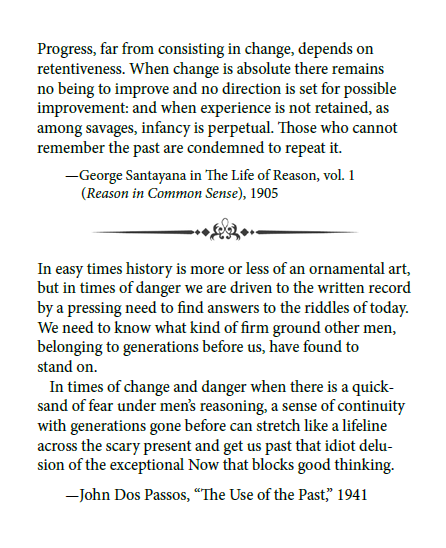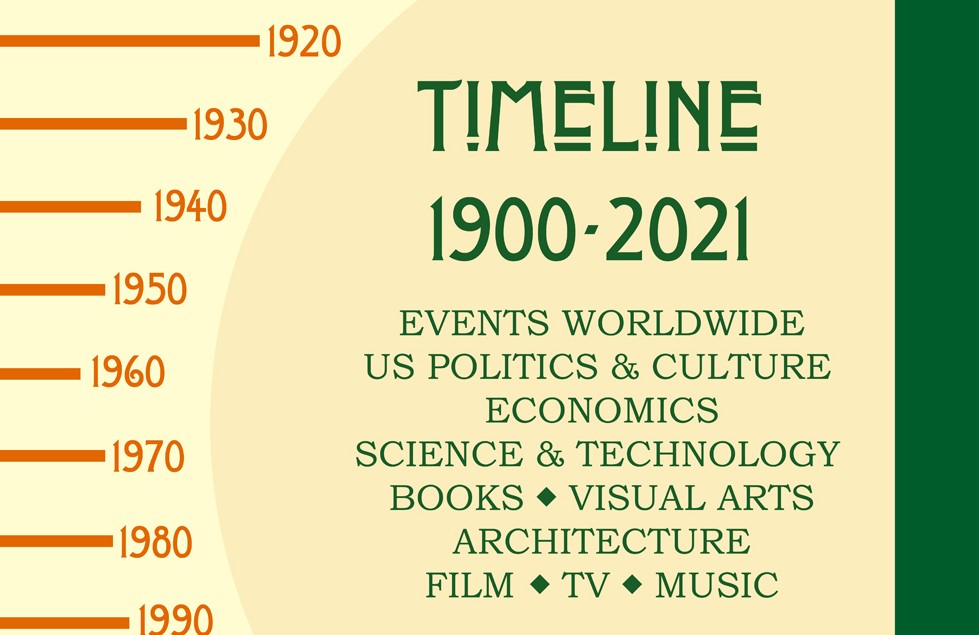This post is available as a video at https://youtu.be/yIP9Nw3_5w8.
NOTE: As of 5/15/24, this book (print and ebook formats) is temporarily unavailable while I prepare a second edition, with improvements that I thought of while working on the prequel, Timeline 1700-1900. To be notified when Timeline 1900-2021 is available again, and to get pre-publication versions of Timeline 1700-1900, follow me on Substack.
Available on Amazon, as a print book or Kindle, and from other stores via Ingram (print ISBN 978-1-0880-9535-5, epub 978-1-0880-9542-3). The Ingram copy is printed on paper that’s slightly heavier and has no gloss: I find it slightly easier to read, although the photos don’t reproduce quite as well.
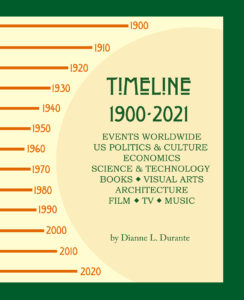
The printed book is 115 pages with full-color illustrations. It’s divided into decades, with a detailed index.
What follows is the introduction to the Timeline (pp. 4-6 in the printed book). NOTE: The blog posts on the timeline have a small selection of highlights from each decade. A few samples of the complete text are at the end of this post.
Want to change the world?
Few of us are completely happy with the world as it is. But to change the future, we have to know the past. What actually happened? What ideas drove those events?
If we want peace rather than thousands dying in Vietnam, Afghanistan, or the Twin Towers, it’s not enough to know that those deaths happened. We must know the thinking that brought them about.
If we want prosperity, it’s not enough to know when the Dow Jones Industrial Average rose and fell. We have to know what economic policies the government was promoting in times of prosperity, and what principles businesses were operating by. The list goes on and on, for any moral and political issue one might name.
The point of knowing the past is to understand the causes and effects, the ideas and consequences, that can help us make intelligent decisions now and in the future. Unfortunately, history is usually taught without this practical purpose in mind. We memorize a list of names and dates, and then forget them as soon as the test is over.
I did that, too, until the summer after I graduated high school, when I read H.W. Janson’s History of Art. Janson’s “synoptic tables” cover some 6,000 years, with columns for Political History, Religion & Literature, Science & Technology, Architecture, Sculpture, and Painting. From reading Janson, I learned that yes, writers, artists, scientists, politicians, and others do express their own ideas—but they also reveal ideas common to their time regarding what’s important and what’s right.
Studying history lets us see the consequences of those common ideas playing out on a wide scale. We can learn what works and what doesn’t. To get metaphorical: we need to see the trees and the forest, plus the reasons the forest grew right there, and what’s likely to happen if we plant another forest in similar conditions.
So my goal in this book is not just to list events in the United States from 1900 to 2021, but to give a sense of the ideas that dominated in a particular decade. To keep the book a reasonable length, I decided to include a substantial quote from each president of the United States. Winning politicians generally have the most widely shared ideas: after all, that’s why they were elected.
I hope that when you see the juxtaposition of politics and science, economics and the arts, you’ll be inspired to think more about how they’re related: that is, what ideas drove Americans over the course of the twentieth and early twenty-first centuries. This timeline is meant as a scaffolding on which you can build a better understanding of the past and the present, and increase your ability to change the future—whatever you want that future to be.
Incidentally, it’s also rather soothing to know that today’s crises are not unique. Our predecessors figured out how to deal with horrendous calamities. We can, too.
What’s included
Again for the sake of keeping the timeline to manageable length, I’ve included only events and people that have the broadest interconnections and greatest impact on politics and culture in the United States. Certain events, such as World Wars 1 and 2, would be included in anyone’s list. But in terms of twentieth-century history, the McCarthy Hearings have far more significance than Princess Diana’s life and death—even though by 2022, more has probably been published on the Princess than on the Hearings. Civil wars in Africa and Asia are seldom mentioned, because their effect in the US was generally minor. Nor have I included natural disasters, which are not driven by ideas.
Some items (especially in the arts) are included because they recall certain periods to my mind: for example, Barry McGuire’s “The Eve of Destruction”, The Scarlet Pimpernel musical, and late twentieth-century architecture in New York City. Because your context is different from mine, I’ve left space on most facing pages for you to add items that you feel are worthy of inclusion. A handful of illustrations is included for each decade, to help bring events and artworks more vividly to mind.
Although I have very strong opinions on many of the items that appear on this timeline, I’ve deliberately used neutral language rather than terms that reflect my own values. Why? Because it would not be fair to impose my emotional reactions on you if I’m not willing to explain why I feel so strongly. (No, I did not thrive on Twitter!)
Organization
The timeline is broken down into ten-year periods: 1900-1909, 1910-1919, and so on. Each decade is divided into the following subjects, which are color-coded in the text. Feel free to read the book decade by decade, or subject by subject.
Each decade includes the following color-coded sections.
MAJOR EVENTS & TRENDS
An attempt to summarize what’s important about a given decade. We look at questions such as how the government is changing, the state of the economy, and major shifts in opinion among the American public.
For the arts, new genres and subjects are noted—the earliest horror movies and spy thrillers, for example. As a summary for music (and for the sense of life of a given decade), I’ve filled in the blank of “I love you and I want to …” from one of the most popular love songs of that decade.
POLITICS WORLDWIDE
Limited to events that the US was involved with in an important way, or that had significant effects on the US. For example, given the long-term effects of the energy crisis caused by the OPEC embargo in 1973-1974, it’s worth knowing that the oil fields in the Middle East were explored and developed by the British beginning in 1901, and also that after Iran’s parliament nationalized the British oil fields, Britain and the US orchestrated a coup in 1953 to reverse the nationalization. America’s subsequent support of the Shah of Iran helps explain why, in 1979, Iranian revolutionaries detested the US so much that they held American diplomats hostage for more than a year. And the hatred of militant Islamists for the United States explains the attacks on the Twin Towers in 2001.
For the years 2000-2021, it’s more difficult to discern which events will have long-term impact. I’ve included more items for those years, and more space for you to add your own items.
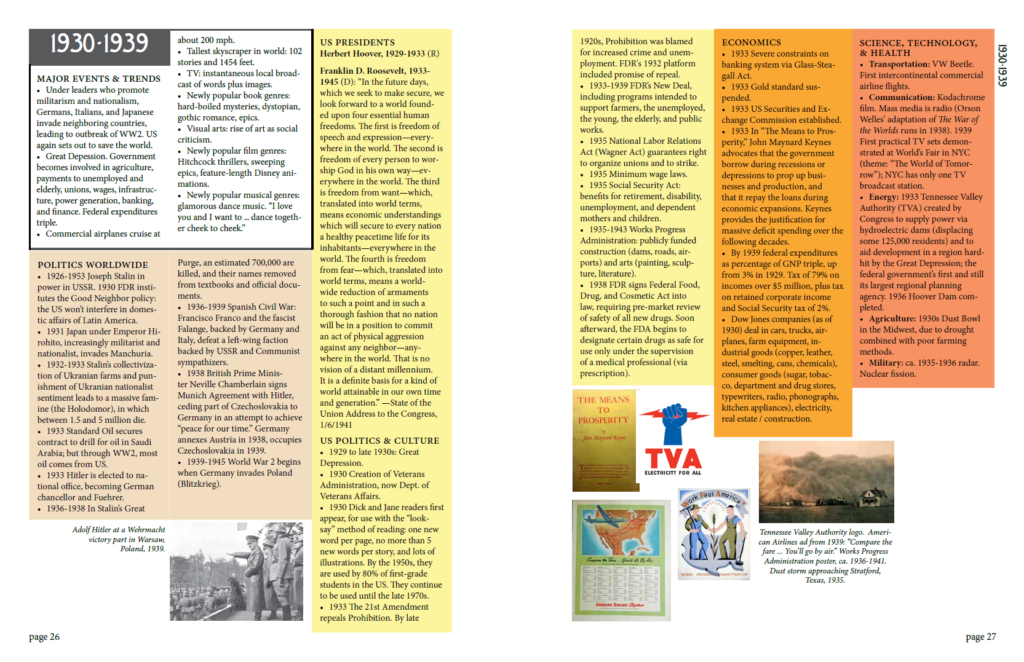
U.S. PRESIDENTS, POLITICS, & CULTURE
For each president, a representative quotation is included that reveals his priorities and to some extent the spirit of his time. Reading these in order makes the change in dominant ideas from 1900 to 2021 quite startling.
Politics in this section includes major legislation, important court cases, and the creation of cabinet departments. Under culture, I’ve noted movements such as the Jazz Age and the counterculture of the 1960s.
Again, for 2000 and later, it’s more difficult to discern what will have long-term impact, so more events are included, and more space is allowed for your own items.
ECONOMICS
Includes information on inflation, recessions, growth of GDP, taxation, unemployment, and leading sectors of the economy.
SCIENCE, TECHNOLOGY, & HEALTH
Divided into sections on transportation, communication, energy, medicine, food, military, genetics, environmentalism, theoretical science, and inventions. Not all of these appear in every decade.
BOOKS
Divided into bestsellers (as rated by Publishers Weekly and the New York Times) and cutting-edge works. The bestsellers give a good idea of what the majority of the American public considered entertaining enough to spend money on. Cutting-edge works (by authors such as Gertrude Stein, James Joyce, and Alice Walker) were not bestsellers when issued, but were praised by critics and eventually came to be considered important.
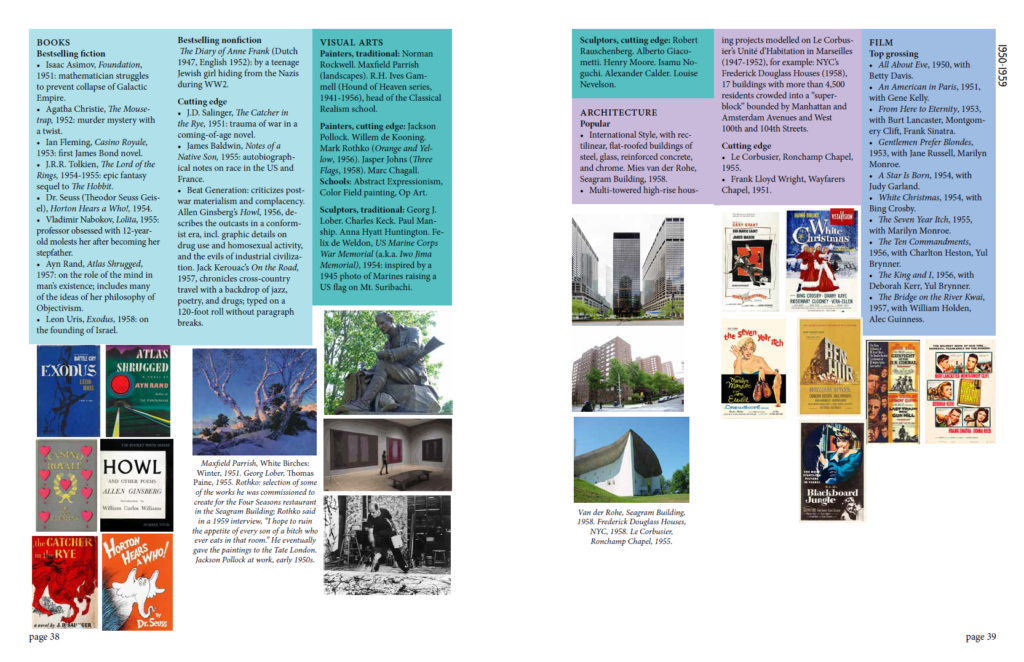
VISUAL ARTS
Separate sections for painting and sculpture, with each divided into traditional (representational or figurative) and cutting-edge. Traditional works represent American popular taste. Cutting-edge paintings and sculptures represent the critics’ taste; these are usually the works that appear in art-history texts.
ARCHITECTURE
Popular architecture is the style that most individuals and institutions expect when they commission buildings. Cutting-edge is what avant garde architects are building and critics are praising.
FILM
Includes top-grossing movies, and (eventually) popular TV and video games.
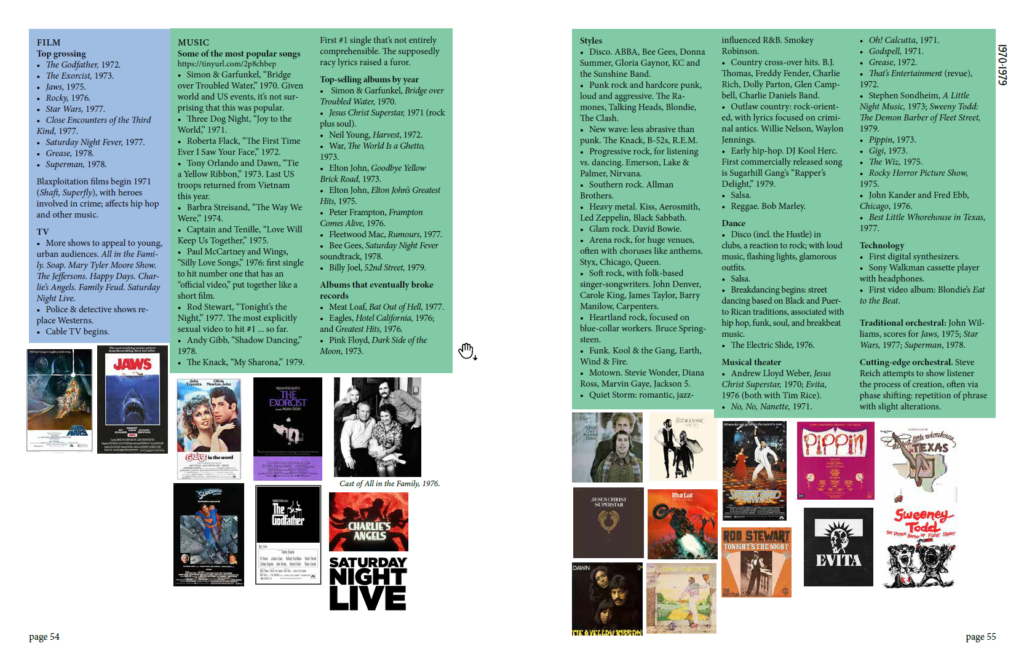
MUSIC
Each decade begins with a list of the most popular songs year by year, usually based on sales according to Billboard Magazine. A playlist of those songs is available on YouTube: the URL is given near the top of the Music section. For the playlist, I’ve chosen the earliest performance possible.
Other sections under Music include bestselling albums (once albums start to be sold), styles, dance, musical theater, technology, traditional orchestral works, and cutting-edge orchestral works.
The quotations below appear between the introduction and the beginning of the main text.
